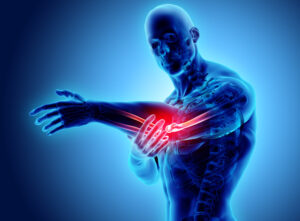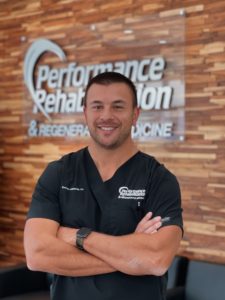What is Spondylolises?
Instead of indicating a specific diagnosis, spondylosis refers to any condition that results in degenerative changes of the spine. Although spondylosis is most commonly used as a synonym for spinal osteoarthritis, a variety of spinal problems fit the broad criteria for spondylosis.
Facet Joint Osteoarthritis (also known as Facet Joint Disease) accounts for the bulk of spondylosis cases. Facet joints are hinges on the back of the spine where bone meets bone—or in this case, where vertebra meets vertebra. As we age, the cumulative effects of everyday wear and tear may cause the rubbery cartilage that cushions our facet joints to erode. This degenerative process triggers a cascade of pain-generating events, as unprotected bone grinds excruciatingly against unprotected bone.

Symptoms of Spondylolises?
- Radiating Pain: Searing pain that radiates outward to the limbs from the region of spinal degeneration in the neck or back
- Sciatica: Warm pain that erupts from the sciatic nerve in the lower back and diffuses downward through the buttocks, thighs, calves, and feet
- Cervical Radiculopathy: Electric pain that emanates from the site of nerve compression in the neck and down through the shoulders, arms, hands, and/or fingertips
- Paresthesia: Numbness, tingling, or burning sensations in your extremities
- Loss of Balance & Motor Control: Balance disturbances or muscular weakness that impede your ability to move your arms and legs (gross motor control) or your hands, wrists, fingers, and feet (fine motor skills)
- Facet Joint Stiffness: Progressive inflexibility that interferes with your ability to rotate your head and/or twist, bend, or extend your lumbar spine
- Activity-Specific Pain: Stiffness and pain that worsens with prolonged sitting or standing; Difficulty walking or maintaining proper posture
- Neck-Related Symptoms: Shoulder blade pain; headaches at the base of the head; dizziness; or “crunching” sensations while rotating the neck
- Emergency Symptoms: Seek urgent medical care if you experience debilitating or excruciating pain; involuntary control of your bowels or bladder; saddle anesthesia (or unrelenting numbness in the saddle region of your inner thighs, buttocks, and groin); or a fever higher than 100.0 oF.
Causes of Spondylolises
- Spondylolisthesis is most often caused by spondylolysis. While the cause of spondylolysis is not clearly, many believe it is due to genetic weakness of a particular part of the vertebrae that makes up a facet joint. This genetic weakness, and subsequently spondylolysis, can be present at birth or occur later in life as the result of injury. It can also be caused by repeated stress fractures often experienced by athletes. The most common cause of Spondylolisis in adults is degenerative arthritis.
Areas of Spondylolises?
- Cervical Herniated or Bulging Disc
- Lumbar Herniated or Bulging Disc
- Thoracic Herniated or Bulging Disc
Spondylolises Solutions in NJ
Here at Performance Rehabilitation, we have many options to treat your spondylolises, including non-surgical and surgical.
Spondylolises Non-Surgical Solutions in NJ?
Spondylolises Surgical Solutions in NJ?
- Laminectomy: A laminectomy is a minimally invasive procedure in which your surgeon removes a thin segment of the lamina—or bony plate that forms the backside of your vertebra. Extraction of the lamina not only achieves bone spur removal, but also accomplishes lumbar nerve decompression—eliminating symptoms of pinched nerve pain that assail the lower body.
- Artificial Disc Replacement: An artificial disc replacement is a sophisticated solution to cervical spondylosis that eliminates the need for a spinal fusion procedure. This outpatient surgical procedure involves removal of the degenerated disc and replacement with a prosthetic model. Avoiding spinal fusion allows the patient to preserve mobility in the neck and decreases the mechanical stress placed on adjacent vertebrae.
- Endoscopic Foraminotomy: An endoscopic foraminotomy is a minimally invasive decompression procedure that is used to reverse foraminal stenosis. During the procedure, your surgeon uses an optical instrument known as an endoscope to visualize problematic regions of bone overgrowth or spinal deterioration. The entire procedure (including endoscope insertion) is performed through a tiny tube that minimizes scarring and protects adjacent nerves from unnecessary trauma.
Why Choose Performance Rehabilitation & Regenerative Medicine?
Whether you are suffering from a recent or chronic (cervical, lumbar or thoracic spine) condition that is adversely affecting your ability to live life under your terms, our Back Pain Specialists can help you today. To have a consultation with one of our doctors, please contact one of our Patiet Care Coordinators at 908-754-1960.




















